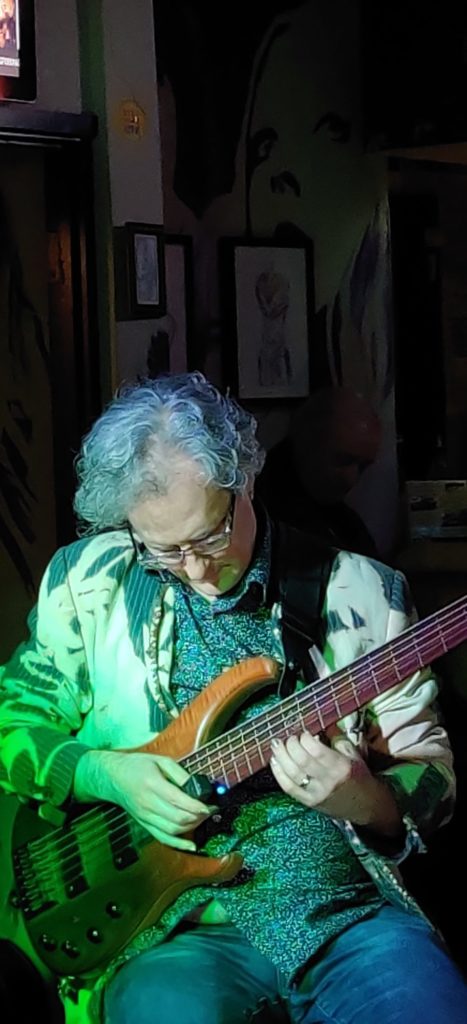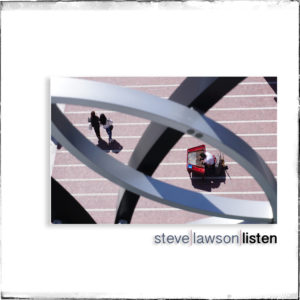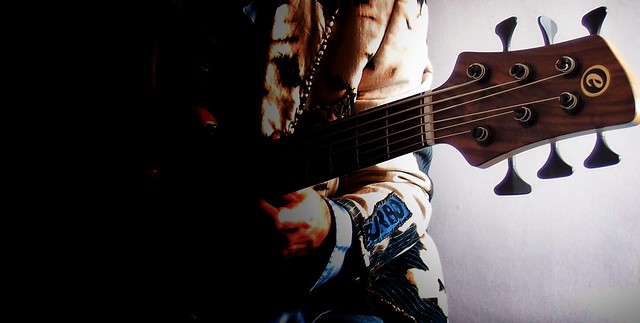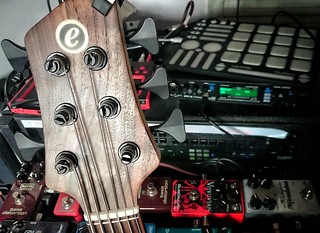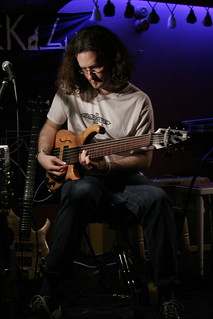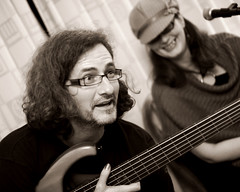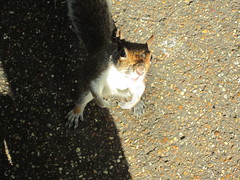 For an artist as prolific as Steve Lawson, ‘new album’ can mean a lot of things. Time Stops, in Steve’s own words, marks the first time in a long way that the music hasn’t been catharsis-first. “It feels like a very long time since I played music for its own sake.” says Steve, going on to explain “Throughout the pandemic and then through my lymphoma diagnosis and treatment, music was very explicitly the soundtrack to a set of narratives, emotions, experiences – it produced some really lovely music, some music that is so special to me, but that association with a story means that for those who know the story, it has a whole other layer of meaning.”
For an artist as prolific as Steve Lawson, ‘new album’ can mean a lot of things. Time Stops, in Steve’s own words, marks the first time in a long way that the music hasn’t been catharsis-first. “It feels like a very long time since I played music for its own sake.” says Steve, going on to explain “Throughout the pandemic and then through my lymphoma diagnosis and treatment, music was very explicitly the soundtrack to a set of narratives, emotions, experiences – it produced some really lovely music, some music that is so special to me, but that association with a story means that for those who know the story, it has a whole other layer of meaning.”
The lymphoma Steve mentions was diagnosed last July and resulted in 6 months of intense chemotherapy and recovery that helps highlight just how important his Bandcamp subscriber community is. “I realised that I had a group of people who cared about me through the lens of caring about my music. That the two were intrinsically linked. I’d been aware of this for a long time, and that notion was essential in forming the community in the first place, but experiencing what it was like to make music during cancer recovery and do it for an audience who were reading the story and listening to the music within the context of that narrative, was quite extraordinary.”
 The new double album, Time Stops, marks a return to a more traditional model of music making. Of course, stories and emotions and meaning are woven deep into the music as always, but its primary purpose wasn’t to soundtrack a life-changing experience for the subscriber audience. “I was just relishing getting back to exploring the music in my head outside of catastrophe and life-changing events” explains Steve, “Those experiences are here too, particularly the lightness of much of the music reflecting the feeling of currently being in remission, possibly for good, but this wasn’t ‘let’s document with music how I feel about having cancer’.”
The new double album, Time Stops, marks a return to a more traditional model of music making. Of course, stories and emotions and meaning are woven deep into the music as always, but its primary purpose wasn’t to soundtrack a life-changing experience for the subscriber audience. “I was just relishing getting back to exploring the music in my head outside of catastrophe and life-changing events” explains Steve, “Those experiences are here too, particularly the lightness of much of the music reflecting the feeling of currently being in remission, possibly for good, but this wasn’t ‘let’s document with music how I feel about having cancer’.”
 Across the two albums, Steve draws on the latest iteration of his intricate and bafflingly complex sound-world. The album was recorded while in California, where Steve was visiting the NAMM Show for the first time since January 2020, immediately pre-pandemic. It features his Elrick SLC signature 6 string fretted bass throughout and all the sounds are from the MOD Audio DuoX – a multi-FX pedal that offers an unparalleled level of audio manipulation and experimentation. Central to all of the work is what Steve describes as “some of the best melodic inventiveness I’ve recorded in many, many years. Melody is always central to my music world, but during the soundtrack-experiments of the last few years, large scale ambient works became the dominant form. Here, tunes are back in the foreground, big time!”
Across the two albums, Steve draws on the latest iteration of his intricate and bafflingly complex sound-world. The album was recorded while in California, where Steve was visiting the NAMM Show for the first time since January 2020, immediately pre-pandemic. It features his Elrick SLC signature 6 string fretted bass throughout and all the sounds are from the MOD Audio DuoX – a multi-FX pedal that offers an unparalleled level of audio manipulation and experimentation. Central to all of the work is what Steve describes as “some of the best melodic inventiveness I’ve recorded in many, many years. Melody is always central to my music world, but during the soundtrack-experiments of the last few years, large scale ambient works became the dominant form. Here, tunes are back in the foreground, big time!”
The album is out now for Steve’s Bandcamp subscribers, and will be available to the public on May 26th, as two separate albums, volumes 1 & 2 exclusively via Bandcamp. A third volume of subscriber only material is also released.
“It feels really good to be back making music this way, for music to be something other than self-care. It’s still very much self-care, but with a greater outward focus.”

